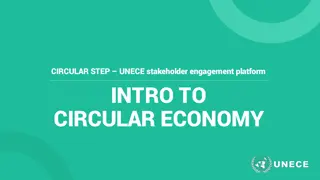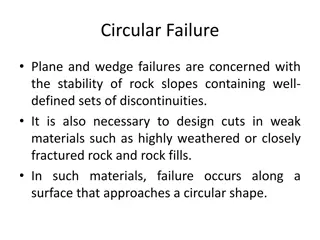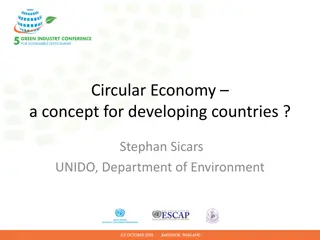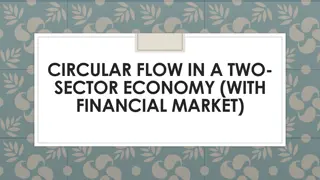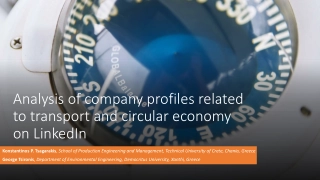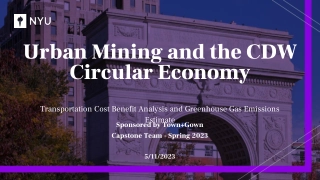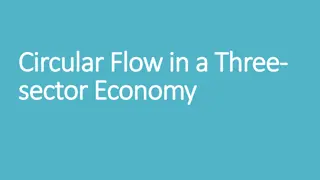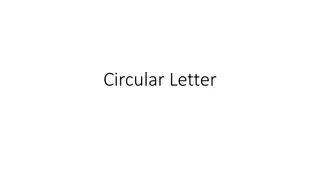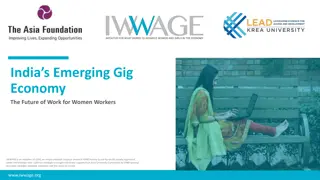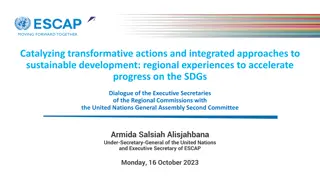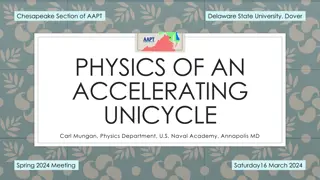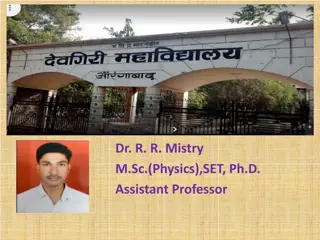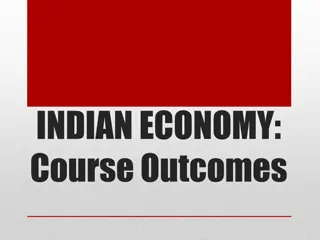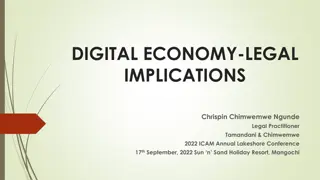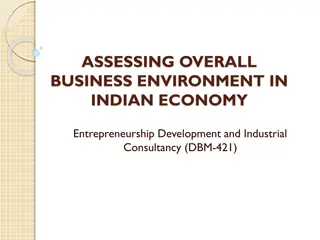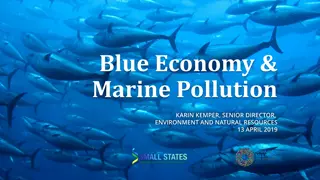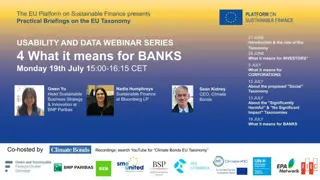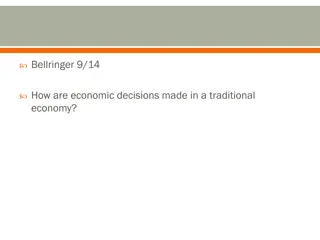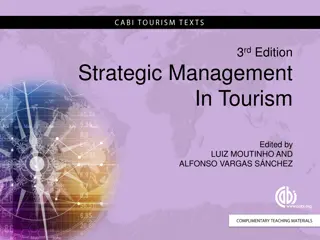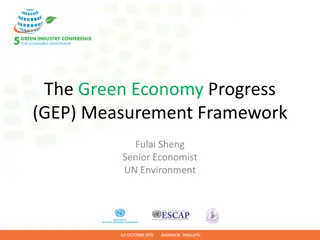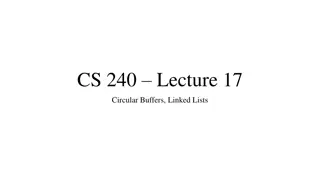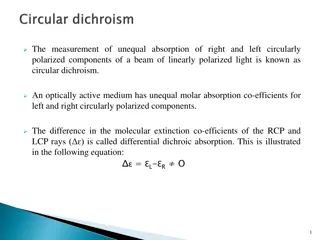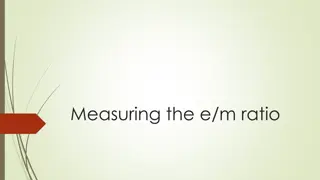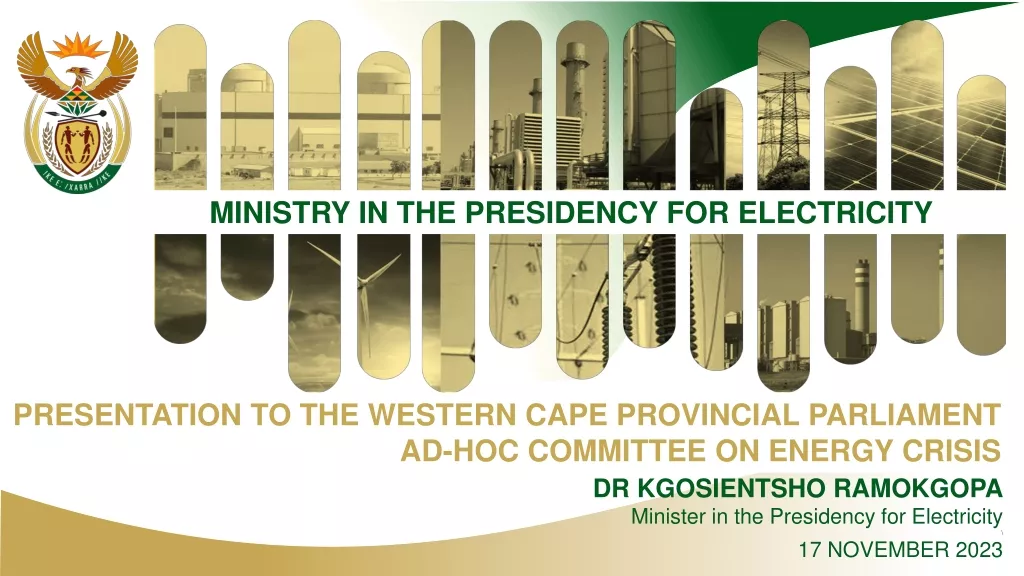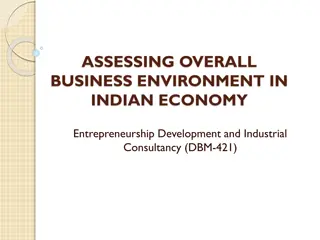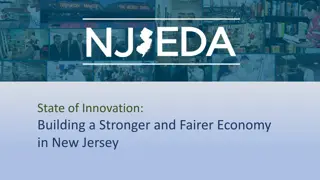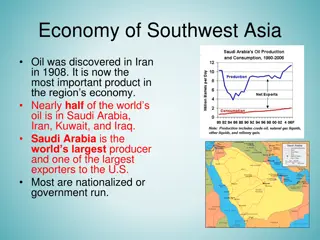Accelerating Towards a Circular Economy Future
The circular economy presents a vital solution to tackle climate change by focusing on regenerative growth, reducing resource consumption footprint, and enhancing material use efficiency. The EU's Circular Economy Action Plan aims to usher in a sustainable future through decoupling economic growth from resource use and promoting sustainable practices across industries.
Download Presentation

Please find below an Image/Link to download the presentation.
The content on the website is provided AS IS for your information and personal use only. It may not be sold, licensed, or shared on other websites without obtaining consent from the author. Download presentation by click this link. If you encounter any issues during the download, it is possible that the publisher has removed the file from their server.
E N D
Presentation Transcript
Relevance of Circular Economy Manuspanicker, CC0, via Wikimedia Commons Apurv013, CC0, via Wikimedia Commons Climate change Social aspects Consumption of virgin resources Ecologic aspects Photo courtesy of Peter Buschmann, United States Forest Service, USDA. Some additional editing by W.carter., Public domain, via Wikimedia Commons World population The world's current circularity gap is over 90% United States government, Public domain, via Wikimedia Commons Koalabaer2007, CC0, via Wikimedia Commons Economic Necessary steps CO2-neutrality Decoupling growth from resource use Avij (talk contribs), Public domain, via Wikimedia Commons aspects
The New Circular Economy Action Plan the EU needs to accelerate the transition towards a regenerative growth model that gives back to the planet more than it takes, advance towards keeping its resource consumption within planetary boundaries, and therefore strive to reduce its consumption footprint and double its circular material use rate in the coming decade
Transforming the EUs economy for a sustainable future Make the transition to modern, resource-efficient and competitive economy, ensuring: no net emissions of greenhouse gases by 2050, 55% reduction by 2030 economic growth decoupled from resource use no person and no place left behind A New Industrial Strategy: Each of the 14 EU industrial ecosystems needs to transform its business models and value chains to form the basis for a green, digital and resilient European economy. Transition pathways are being developed. Detailed plan of legislative and non-legislative EU measures that targets how products are designed, promotes circular economy processes, encourages sustainable consumption, and aims to ensure that waste is prevented and the resources used are kept in the EU economy for as long as possible.
Introduction to Circular Economy slow Main principles of the circular economy: Eliminate waste and pollution Circulate products and materials at their highest value Regenerate natural systems Did you know that up to 80% of products environmental impacts are determined at the design phase? The circular economy offers a profitable opportunity to move away from resource-intensive processes, maximise the use of existing assets, create new revenue streams and preserve natural capital
Understanding opportunities of the circular economy in contrast to the inefficiencies of linear economy Example: Manufacturer of playground equipment Use of materials Product lifetime Product capacity End of life value Kids grow fast, interests change Are durability and recyclability a criterium for material selection? Are reparability, modularity and upgradeability considered? Do your products realise their full potential? How do you imagine the end of lifetime for your product?
Approaches for circular innovation Product innovation Process innovation Business model innovation Use of materials Design the product for closed loop recycling Substitution of virgin raw materials by bio-based or recycled materials Build a circular supply chain Product lifetime Develop a portfolio for product life extension Apply LEAN manufacturing processes with standardized parts Use modular design that may be adjusted when kids grow Product capacity Swings as a service for a monthly fee End-of-life value Design products to be remanufactured Apply ICT processes enabling reverse logistics and refund system Offer a take-back scheme
How did other companies transform towards circular economy? The Czech company BRENS Europe develops and manufactures products for the construction of railway tracks, level crossings and noise protection measures. Challenge The company has long perceived that it cannot keep drawing on non-renewable resources. Instead, it decided to start using waste for production. Solution BRENS works with recyclates from concrete or tyres. It recycles and reuses waste materials: scrap iron, concrete and rubber rubble. BRENS experts have also taken advantage of the excellent technical and utility properties of the material from the automotive industry. This is why one of the latest projects, a tram track noise absorber, is made from reprocessed offcuts from car seats, carpets, filters and shredded rubber from used tyres.
How did other companies transform towards circular economy? KODAS is a producer of high-quality natural fermented drinks and other products, located in Southern Estonia. Challenge The main waste in the production process of juice and juice drinks is the pressing residue of apples or other fruits. Until recently, the pressing residues were useless bio-waste for the company, which had to be composted and the associated costs had to be covered. Solution Kodas has developed a technology for refining the press residue for human consumption. For example, recipes for fiber-rich apple and berry purees have been developed. This makes the entire production process more environmentally friendly and economically efficient. Besides the significant increase in resource efficiency, the residue-based products have helped to enrich the product range of Kodas.
How did other companies transform towards circular economy? FRANCE CONSTRUCTION/HEXDALLE designs and produces damping materials to cover all the risks in playgrounds, gyms, shooting ranges or industry since 1997. Challenge The main material France Construction uses is rubber. The company started reflecting on the impact of sustainability several years ago and decided to use recycled (and recyclable) rubber. In a next step the company intends to close the loop and move up the value chain by recovering, grinding and recycling rubber waste. Solution The company worked on a business plan to validate the technical and economic aspects to recover and recycle rubber waste in their own facilities. The objective is to avoid tyre disposal in landfill sites, strengthen own expertise on recovering and recycling of rubber waste as well as to secure the supply chain.
How did other companies transform towards circular economy? siebold/hamburg provides all kinds of services in the field of design and construction of exhibition stands and shop fittings as well as the procurement and storage of related materials. Challenge Exhibitions only take place for few days, but for a successful trade fair appearance the booths should catch the eye and every customer has special wishes and requirements. Nevertheless siebold/hamburg wanted to offer a climate-neutral trade fair presence. Solution siebold/hamburg applies the most economical use of materials and a high level of reuse. Using the software UMBERTO for Carbon Footprint, alternative material and storage lists can be evaluated with their reusability and recycling proportions and CO2 emissions of the booth can be calculated. Partnering with ForestFinance Group customers can offset the remaining CO2 emissions.
How did other companies transform towards circular economy? FAGUM STOMIL is a Polish manufacturer of safety footwear that has been operating since 1899. It produces footwear made from polymers for industrial and household applications. Challenge The company already used recycled materials but was still facing high production and energy costs and high environmental charges for disposal of production wastes. Solution Fagum Stomil introduced the world's first industrial recycling technology for used EVA footwear. Material from production waste, that was previously disposed of in a landfill or incineration plant, is recovered and customers are invited to return their end-of-life wellingtons. Thanks to the use of waste materials and to saving charges for disposal, the company could significantly reduce production costs.
How did other companies transform towards circular economy? REYNALDI SRL SB is an Italian company with more than 40 years of experience in formulating and producing natural cosmetics. Challenge The company wanted to develop innovative and functional cosmetic products made from natural and sustainable raw materials and reduce the environmental footprint of production. Solution Reynaldi invested in a filter system that recovers the water used in the production, purifies and re- introduces it in a closed cycle water usage. The plant paid off in 3 years, and now represents a minor cost. Reynaldi invested in a start up that produces innovative raw materials from food production waste. Introduction of circular raw materials has the potential to reduce CO2-footprint and makes the supply chain more resilient. A challenge were the regulatory barriers, as often by products derived from industrial sites are labelled as special waste which prohibits their usage.
How did other companies transform towards circular economy? GRUPO NATAC S.L.U., headquartered in Spain, is dedicated to researching, developing, manufacturing and marketing natural ingredients to be used in food supplements, feed, pet food, as well as in functional foods and as natural, active pharmaceutical ingredients. Challenge To sustainably manufacture natural plant extracts and ingredients, Natac valorizes biomass from agro- industry. Main challenges encountered were the great variability in the state of raw materials, regulatory aspects and the need to bring together very heterogeneous actors from very different sectors. Solution Natac built strategic alliances with the most important local producers, who now follow Natac s criteria regarding the cultivation, harvesting, and processing of raw materials. This enhances the beneficial properties in the ingredients. Natac has been able to recycle 98% of the waste generated.
Your Up2Circ client journey Explore opportunities to innovate towards circularity and discover benefits for your company! Design a detailed action plan based on an in-depth assessment. Participate in a comprehensive set of learning modules for circular business model, product and process innovation! Implement transition measures with support of EU-funding! Up2Circ Incentive Scheme supports the uptake of circular business models (<15.000 ) and the uptake of circular product or process innovation (<50.000 ) Belong to a network of Up2Circ SME ambassadors and share your success story with other SMEs and stakeholders within the EU innovation support ecosytem To apply for funding in Up2Circ Incentive Scheme, prior active involvement in Up2Circ Academy is required!
This project targets SMEs! Are you are a small or medium sized enterprise according to the EU definition? < 250 staff headcount 50 m turnover or 43 m balance sheet total To check if you are eligible as an SME please use the EU self assessment questionnaire
Project timeline Pilot run starts June 2023 Call deadline: 11/2023 First open loop starts November 2023: Call deadline: 5/2024 Second open loop starts May 2024 Call deadline: 5/2025
Lets make Europe more circular! https://up2circ.eu


